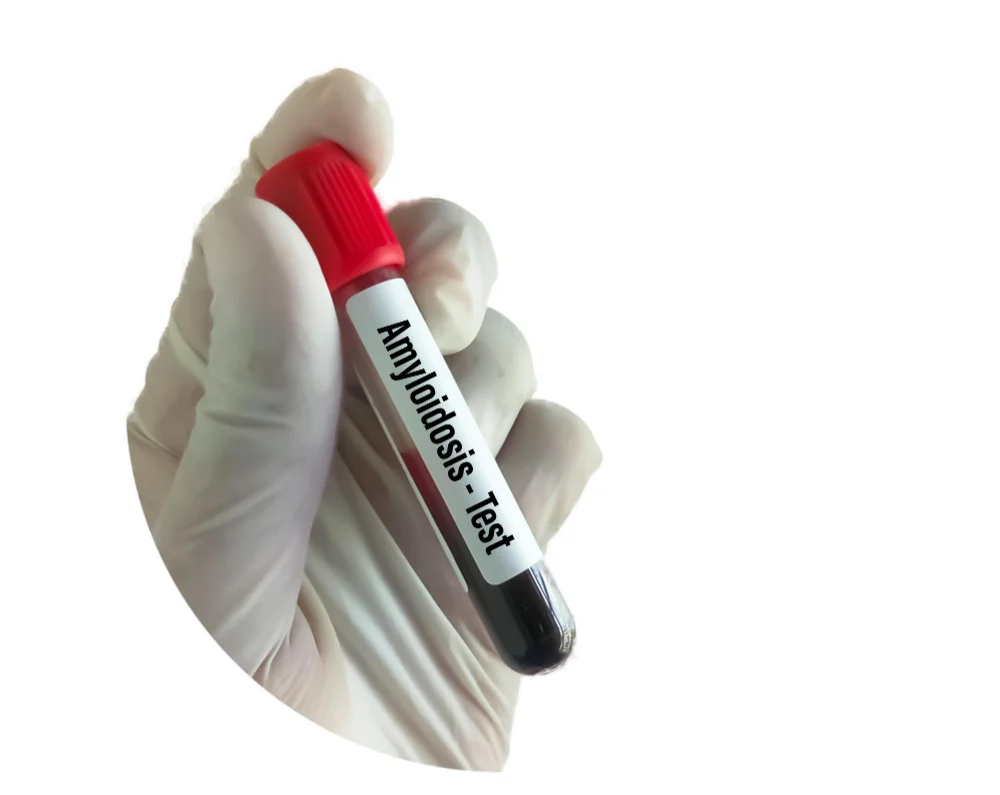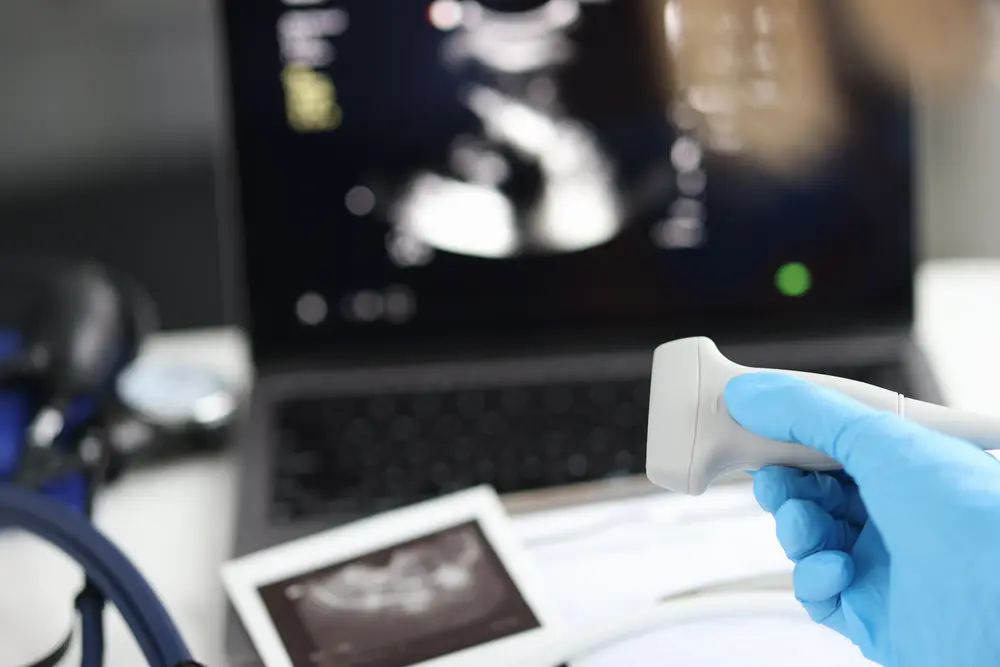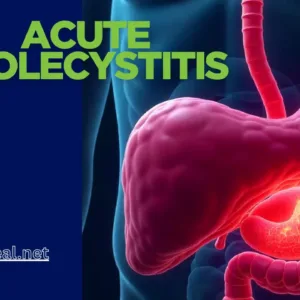Introduction
AA amyloidosis, a complex and potentially life-threatening condition, results from the abnormal deposition of amyloid proteins in various tissues and organs. This blog aims to provide a comprehensive overview of AA amyloidosis, including its pathogenesis, types, causes, diagnosis, management, and follow-up care.
Pathogenesis
AA amyloidosis is characterized by the deposition of amyloid fibrils derived from serum amyloid A (SAA) protein, an acute-phase reactant produced in response to inflammation. The pathogenesis involves several steps:
- Chronic Inflammation: Persistent inflammation leads to elevated levels of SAA protein.
- Protein Misfolding: Excessive SAA undergoes structural changes, leading to misfolding.
- Amyloid Fibril Formation: Misfolded SAA proteins aggregate into insoluble amyloid fibrils.
- Tissue Deposition: These fibrils deposit in various tissues, disrupting normal function.
Types of AA Amyloidosis
AA amyloidosis can present in various forms, depending on which organs are affected by the amyloid deposits. Here, we explore the different types based on organ involvement and their associated clinical manifestations:
1. Renal AA Amyloidosis
Characteristics:
- The most common form of AA amyloidosis.
- Amyloid deposits in the kidneys lead to proteinuria (excessive protein in the urine) and nephrotic syndrome.
Symptoms:
- Swelling in the legs, ankles, and feet due to fluid retention.
- Foamy urine, indicative of high protein levels.
- Progressive renal impairment, potentially leading to chronic kidney disease and end-stage renal failure.
Diagnosis and Monitoring:
- Urinalysis showing high levels of protein.
- Kidney function tests (creatinine, eGFR).
- Renal biopsy for definitive diagnosis.
2. Hepatic AA Amyloidosis
Characteristics:
- Amyloid deposits in the liver cause hepatomegaly (enlarged liver) and liver dysfunction.
Symptoms:
- Enlarged liver felt upon physical examination.
- Elevated liver enzymes (ALT, AST).
- Jaundice (yellowing of the skin and eyes) in advanced cases.
Diagnosis and Monitoring:
- Liver function tests (LFTs).
- Imaging studies (ultrasound, CT scan) to assess liver size and structure.
- Liver biopsy confirming amyloid deposits.
3. Gastrointestinal AA Amyloidosis
Characteristics:
- Amyloid deposits in the gastrointestinal (GI) tract can cause a range of digestive symptoms.
Symptoms:
- Chronic diarrhea or constipation.
- Malabsorption leading to weight loss and nutritional deficiencies.
- Gastrointestinal bleeding.
Diagnosis and Monitoring:
- Endoscopy and biopsy of the GI tract.
- Blood tests for nutritional deficiencies.
- Imaging studies (CT scan) to evaluate structural abnormalities.
4. Cardiac AA Amyloidosis
Characteristics:
- Amyloid deposits in the heart lead to restrictive cardiomyopathy, where the heart becomes stiff and unable to fill properly.
Symptoms:
- Shortness of breath, especially during exertion or when lying down.
- Swelling in the legs and ankles.
- Palpitations or irregular heartbeats.
- Fatigue and weakness.
Diagnosis and Monitoring:
- Echocardiogram to assess heart function.
- Electrocardiogram (ECG) for arrhythmias.
- Cardiac MRI for detailed imaging of amyloid deposits.
- Endomyocardial biopsy in some cases.
5. Musculoskeletal AA Amyloidosis
Characteristics:
- Amyloid deposits in the joints and soft tissues can cause pain and functional impairment.
Symptoms:
- Joint pain and stiffness.
- Carpal tunnel syndrome.
- Swelling and tenderness in the affected areas.
Diagnosis and Monitoring:
- Physical examination of joints.
- Imaging studies (X-rays, MRI) to assess joint and soft tissue involvement.
- Biopsy of affected tissues.
6. Other Organ Involvement
While the above types are the most common, AA amyloidosis can also affect other organs and systems, leading to a variety of symptoms depending on the specific organs involved:
Nervous System:
- Peripheral neuropathy (numbness, tingling, pain in the extremities).
Respiratory System:
- Respiratory issues if the amyloid deposits affect the lungs or airways.
Skin:
- Dermatological manifestations such as purpura (small, purple spots caused by bleeding under the skin).
Causes
The underlying cause of AA amyloidosis is chronic inflammation. Conditions that can lead to persistent inflammation and subsequent AA amyloidosis include:
- Rheumatoid Arthritis: A common cause due to chronic joint inflammation.
- Inflammatory Bowel Disease: Such as Crohn’s disease and ulcerative colitis.
- Chronic Infections: Such as tuberculosis and osteomyelitis.
- Familial Mediterranean Fever: A genetic condition causing recurrent fevers and inflammation.
- Other Chronic Inflammatory Diseases: Such as ankylosing spondylitis and systemic lupus erythematosus.
Diagnosis of AA Amyloidosis
Diagnosing AA amyloidosis involves a combination of clinical evaluation, laboratory tests, imaging studies, and, crucially, tissue biopsy. Early and accurate diagnosis is essential for effective management and improved outcomes. Here is an in-depth look at the diagnostic process for AA amyloidosis:
1. Clinical Evaluation
Patient History:
- Detailed patient history to identify symptoms of chronic inflammatory diseases or conditions that may predispose them to AA amyloidosis (e.g., rheumatoid arthritis, inflammatory bowel disease, chronic infections).
Physical Examination:
- Examination for signs of organ involvement, such as:
- Edema or swelling (indicative of renal involvement).
- Hepatomegaly (enlarged liver).
- Splenomegaly (enlarged spleen).
- Heart murmurs or signs of heart failure (cardiac involvement).
- Gastrointestinal symptoms (e.g., diarrhea, malabsorption).
2. Laboratory Tests
Serum Amyloid A (SAA) Protein Levels:
- Elevated SAA levels indicate active inflammation and can support the diagnosis of AA amyloidosis.

Acute-Phase Reactants:
- Elevated C-reactive protein (CRP) and erythrocyte sedimentation rate (ESR) reflect ongoing inflammation.
Renal Function Tests:
- Blood urea nitrogen (BUN) and creatinine levels to assess kidney function.
- Urinalysis to detect proteinuria (excessive protein in the urine).
Liver Function Tests:
- Alanine aminotransferase (ALT) and aspartate aminotransferase (AST) levels to assess liver function.
Electrolyte Panel:
- To identify imbalances that may suggest organ dysfunction.
3. Imaging Studies
Ultrasound:
- Used to assess the size and structure of organs such as the kidneys, liver, and spleen.

CT Scan and MRI:
- Provide detailed imaging to evaluate organ involvement and detect amyloid deposits.
Echocardiogram:
- Assesses heart function and identifies amyloid-related cardiac abnormalities.
4. Tissue Biopsy
A definitive diagnosis of AA amyloidosis requires the identification of amyloid deposits in tissue samples. Common biopsy sites include:
- Typically performed in cases with significant proteinuria or renal dysfunction.
Liver Biopsy:
- Conducted if liver involvement is suspected based on clinical and laboratory findings.
Rectal Biopsy:
- A less invasive option that can detect amyloid deposits with a relatively high diagnostic yield.
Abdominal Fat Pad Aspiration:
- A minimally invasive procedure where fat tissue is aspirated and stained for amyloid.
Biopsy Procedure:
- Tissue samples are stained with Congo red dye and examined under polarized light. Amyloid deposits exhibit characteristic apple-green birefringence.
- Immunohistochemistry or mass spectrometry can be used to confirm the type of amyloid protein (AA type in this case).
5. Specialized Tests
Genetic Testing:
- In cases with a suspected hereditary component (e.g., Familial Mediterranean Fever), genetic testing may be conducted to identify specific mutations.
Bone Marrow Biopsy:
- May be performed if there is a suspicion of other types of amyloidosis, such as AL amyloidosis, to rule out plasma cell dyscrasias.
Management of AA Amyloidosis
Managing AA amyloidosis focuses on controlling the underlying inflammatory condition, treating organ-specific complications, and monitoring the patient’s overall health. Here is a comprehensive approach to the management of AA amyloidosis:
1. Controlling Underlying Inflammation
Primary Goal:
- Reduce the production of serum amyloid A (SAA) protein by controlling the underlying chronic inflammatory condition.
Medications:
Disease-Modifying Antirheumatic Drugs (DMARDs):
- Methotrexate: Commonly used for rheumatoid arthritis and other inflammatory conditions.
- Sulfasalazine: Effective in treating inflammatory bowel disease and rheumatoid arthritis.
- Leflunomide: Another option for managing rheumatoid arthritis.
Biologics:
- TNF Inhibitors: (e.g., infliximab, adalimumab) Used for rheumatoid arthritis and inflammatory bowel disease.
- IL-1 Inhibitors: (e.g., anakinra, canakinumab) Particularly effective in familial Mediterranean fever and other autoinflammatory syndromes.
- IL-6 Inhibitors: (e.g., tocilizumab) Effective for various inflammatory conditions.
Colchicine:
- Especially effective in familial Mediterranean fever to prevent recurrent inflammatory episodes and reduce SAA levels.
2. Organ-Specific Treatment
Renal Management:
- ACE Inhibitors/ARBs: To reduce proteinuria and protect kidney function.
- Diuretics: To manage edema and fluid overload.
- Dialysis: For patients with advanced renal failure.
Cardiac Management:
- Diuretics: To manage fluid retention and reduce cardiac workload.
- Beta-Blockers: To control heart rate and improve heart function.
- ACE Inhibitors/ARBs: To manage heart failure and hypertension.
Liver Management:
- Regular monitoring of liver function tests.
- Managing symptoms and complications such as ascites or hepatic encephalopathy.
Gastrointestinal Management:
- Nutritional support and dietary modifications to address malabsorption.
- Medications to manage symptoms such as diarrhea or gastrointestinal bleeding.
3. Supportive Care
Pain Management:
- Analgesics or anti-inflammatory medications to manage pain associated with joint and soft tissue involvement.
Nutritional Support:
- Dietary counseling and supplementation to address malnutrition and weight loss.
- Managing gastrointestinal symptoms to improve nutrient absorption.
Physical Therapy:
- Exercises and therapies to maintain mobility and manage musculoskeletal symptoms.
Psychosocial Support:
- Counseling and support groups to help patients cope with the chronic nature of the disease and its impact on their quality of life.
4. Monitoring and Follow-Up
Regular Check-Ups:
- Routine visits to monitor the progression of amyloidosis and the effectiveness of treatment.
- Adjusting medications based on disease activity and side effects.
Laboratory Tests:
- Regular monitoring of SAA levels, inflammatory markers (CRP, ESR), and organ function tests (renal, liver, cardiac).
Imaging Studies:
- Periodic ultrasounds, CT scans, or MRIs to assess organ involvement and monitor treatment response.
Biopsies:
- Follow-up biopsies may be necessary to evaluate the extent of amyloid deposition and the response to treatment.
- Multidisciplinary Care: Involvement of nephrologists, cardiologists, gastroenterologists, and rheumatologists as needed.
Conclusion
AA amyloidosis is a severe condition resulting from chronic inflammation and requires a multidisciplinary approach for effective management. Early diagnosis and aggressive treatment of the underlying inflammatory disease are key to preventing or minimizing organ damage. Regular follow-up and comprehensive care can help manage symptoms and improve quality of life for patients with AA amyloidosis. By understanding the pathogenesis, types, causes, and management strategies, healthcare providers can better support patients in navigating this complex condition.




